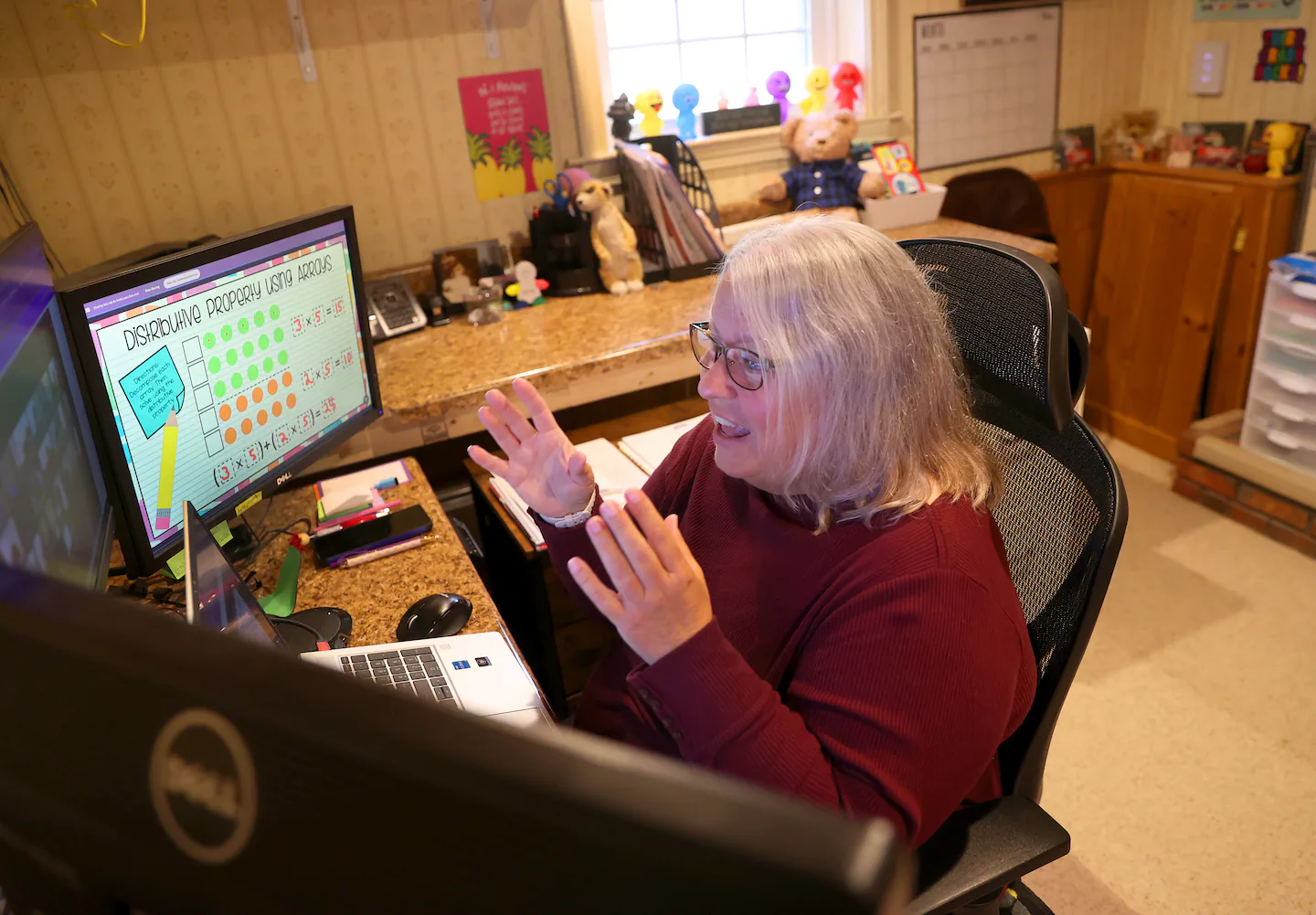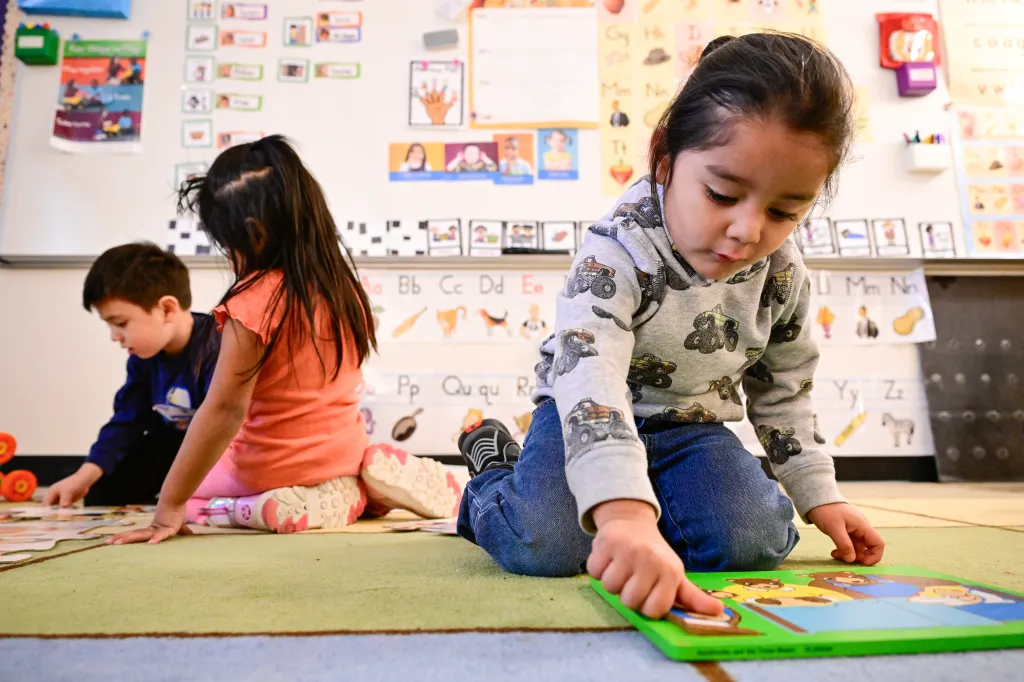Copyright The Boston Globe

“I’m able to keep myself on a schedule, motivate myself, and get things in on time,” said Leonard. “I like having the flexibility.” While most of the state — and country — has spent the past five years trying to forget virtual learning as quickly as possible, an increasing number of families such as Leonard’s are flocking to virtual schools. Alongside the half-dozen local district virtual schools, Leonard’s school, GCVS for short, is joined by one other statewide public school, the TEC Connections Academy, or TECCA. A third, the Felix School, is set to open next year. Most of the schools serve all grades, but some only serve middle and high school students. The two existing statewide schools have been around for a decade, but have seen their enrollment surge more than 50 percent since pre-pandemic to more than 4,000 students. Combined, they have a waitlist of 1,200 students. Proponents of online schools argue they fill a critical niche for students ill-served by brick-and-mortar schools, including medically-fragile children, students who have experienced severe bullying, and those like Leonard who need to schedule around performance or athletic schedules. State data and decades of national research have found most remote schools to be academically low-performing. The COVID scramble to online was far from smooth, with the lost learning in 2020 and 2021 reemphasizing for many the importance of in-person learning. Gary Miron, an education researcher at Western Michigan University who has studied virtual schools for more than two decades, called virtual schools “astonishingly terrible.” “They’re not working,” said Miron, who does not study Massachusetts virtual schools in particular. “The gaps vary, but every year, it’s just terrible.” State MCAS test results show virtual school students meeting expectations at much lower rates than their statewide peers. Even among high-needs students, who are overrepresented in virtual schools, math scores are much lower at virtual schools. Patrick Lattuca, superintendent of TECCA, and other virtual school leaders said the standard metrics for evaluating schools are misleading, given that many of their students are in virtual school because they were unable to succeed in brick-and-mortar ones. For example, TECCA’s on-time graduation rate is very low — around 50 percent — in large part because nearly half of their students enroll already behind schedule. “They look at TECCA as a last-chance option as a public school education,” Lattuca said. “The excitement and the accomplishment is wonderful for these students who think they’re not going to be able to graduate.” While there’s “room to improve,” he said, “The standard measures don’t always work.” The statewide schools require approval and oversight from the state’s Board of Elementary and Secondary Education, similar to Commonwealth Charter schools. The new school, the Felix School, was initially approved by the board in March 2024, with conditions attached to ensure it meets performance goals. Brandon Cardet-Hernandez, a board member of the Felix school, also serves on Boston’s School Committee. He argued that the education system needs to offer more choices. “Virtual and hybrid models for learning are not for everyone, but there are kids that are not being served by the current system, and they need options that work,” Cardet-Hernandez said. The Felix School, which partners with Arizona State University’s online public school ASU Prep Digital, is hoping for academic success through a hybrid approach to virtual schooling in Massachusetts. Students will be able to attend full-time virtually, but the focus will be on in-person hubs with “learning guides” who can tutor, help students with projects, and otherwise supervise. Amy McGrath, CEO of ASU Preparatory Academies, said bringing students in person four days a week has proven very effective at their site in Tempe, Ariz., alongside other aspects, such as low student-teacher ratios. “That learning experience for an online student is pretty incredible,” she said. In Massachusetts, both statewide virtual schools have higher ratios than the state average of about 11.9 students per teacher. Last year, GCVS had 14.3 students per teacher, while TECCA had 20.7. Those in the virtual sector in Massachusetts acknowledge that virtual schools aren’t for everyone, but argue their small sector — fewer than 0.5 percent of public school students — serves well the students who need it. Andrew Costa, superintendent of GCVS, said the school could do better but noted the challenging circumstances of many of its students, including medically fragile children. Other students have significant disabilities or want advanced courses not available in their home districts. Virtual schools, since 2020, have also increasingly bring in students who simply found the self-direction of remote learning more fulfilling, teachers and administrators said. “We know we’re going to struggle [with traditional measures of school quality], based on how we’re built,” Costa said. “But that’s OK. We feel we really meet an intense need for so many students.” Costa said the state’s enrollment cap on virtual schools — at most 2 percent of public school students statewide can attend the schools— and enrollment preferences for students with particular reasons to attend virtual school help ensure “you’re serving students who really benefit from the model.” (In some other states, tens of thousands of students attend virtual schools.) Some families choose virtual schools simply because they prefer to keep their children at home. Fitchburg mother Nicolette Shand, for example, has seven children attending GCVS, and when she first signed her eldest daughter Abigail up for kindergarten, she viewed the school as a sort of homeschooling-light. A conservative Christian, Shand wanted to shelter her children from the experience of a traditional public school. On a typical day, Shand shuttles around the house, checking in on seven children’s studies, while caring for her youngest, who is 3 years old. “GCVS is like a family,” Shand said. “It’s all in the proof of my babies’ education, and how they’re growing.” Abigail, 16, said she has really liked the flexibility of online classes, which has allowed her to spend her time studying languages such as Korean and German. “The good thing about virtual school is that you can do things on your own time,” she said. “If you want to do a job, it’s way more easier to get a job in a virtual school.” Teachers at virtual schools say they have academic benefits. Beth Morley, a third-grade teacher at TECCA who previously taught in multiple traditional public school districts and lives in Norton, said she finds that with a virtual classroom, she can spend more time teaching and less time on behavior management. She also feels she gets to know students better, as she can see their homes, families, pets, and more on their computer screens during the school day. For students like Leonard, virtual schools are a huge benefit. She’s very social and sometimes worries about missing out on classic high school experiences. She has friends at school, but they live all over the state, so she can’t see everyone regularly. But she’s proud of her work. “It just finished airing,” she said, of “Platonic.” “That was my biggest project.”



